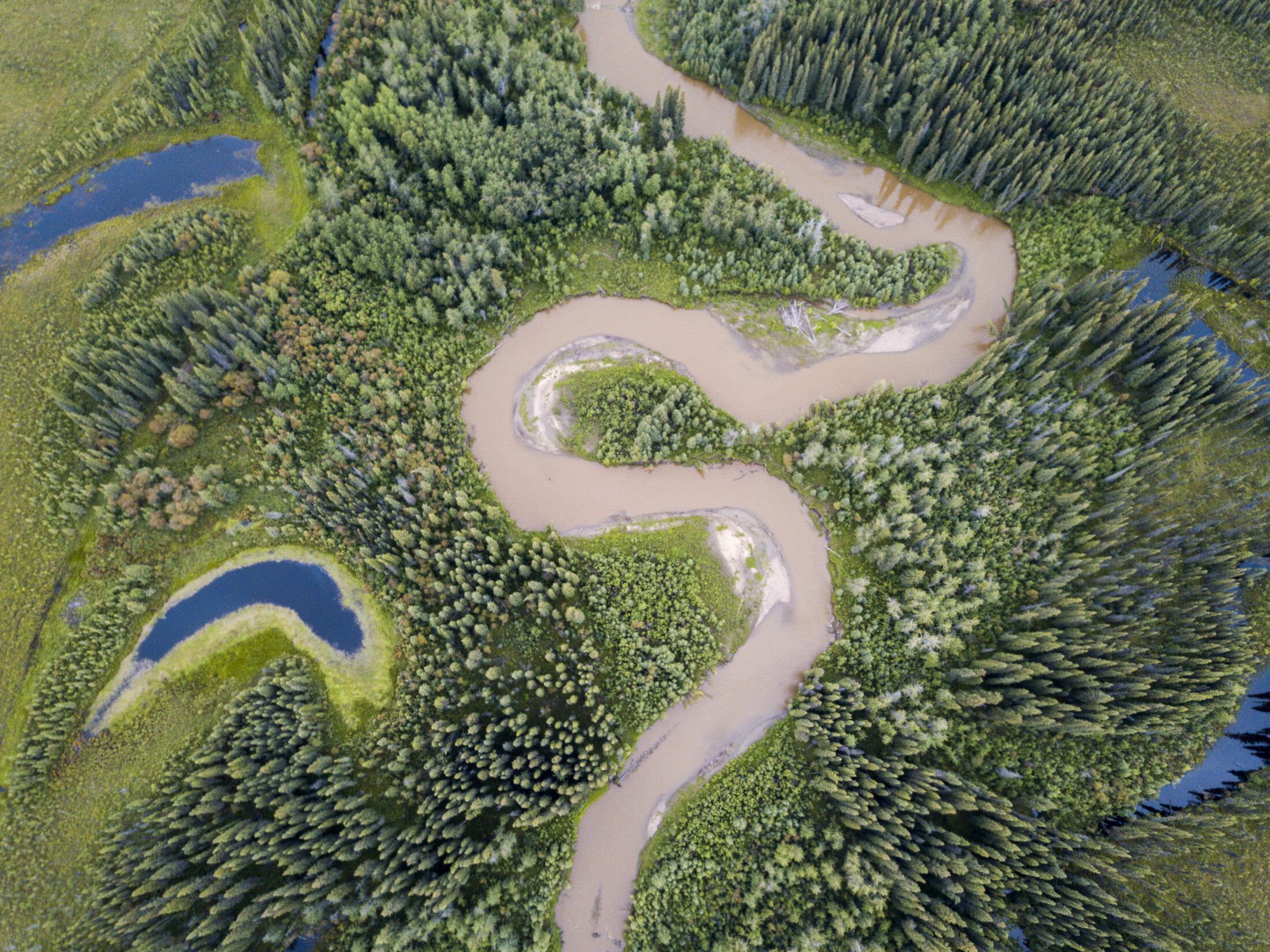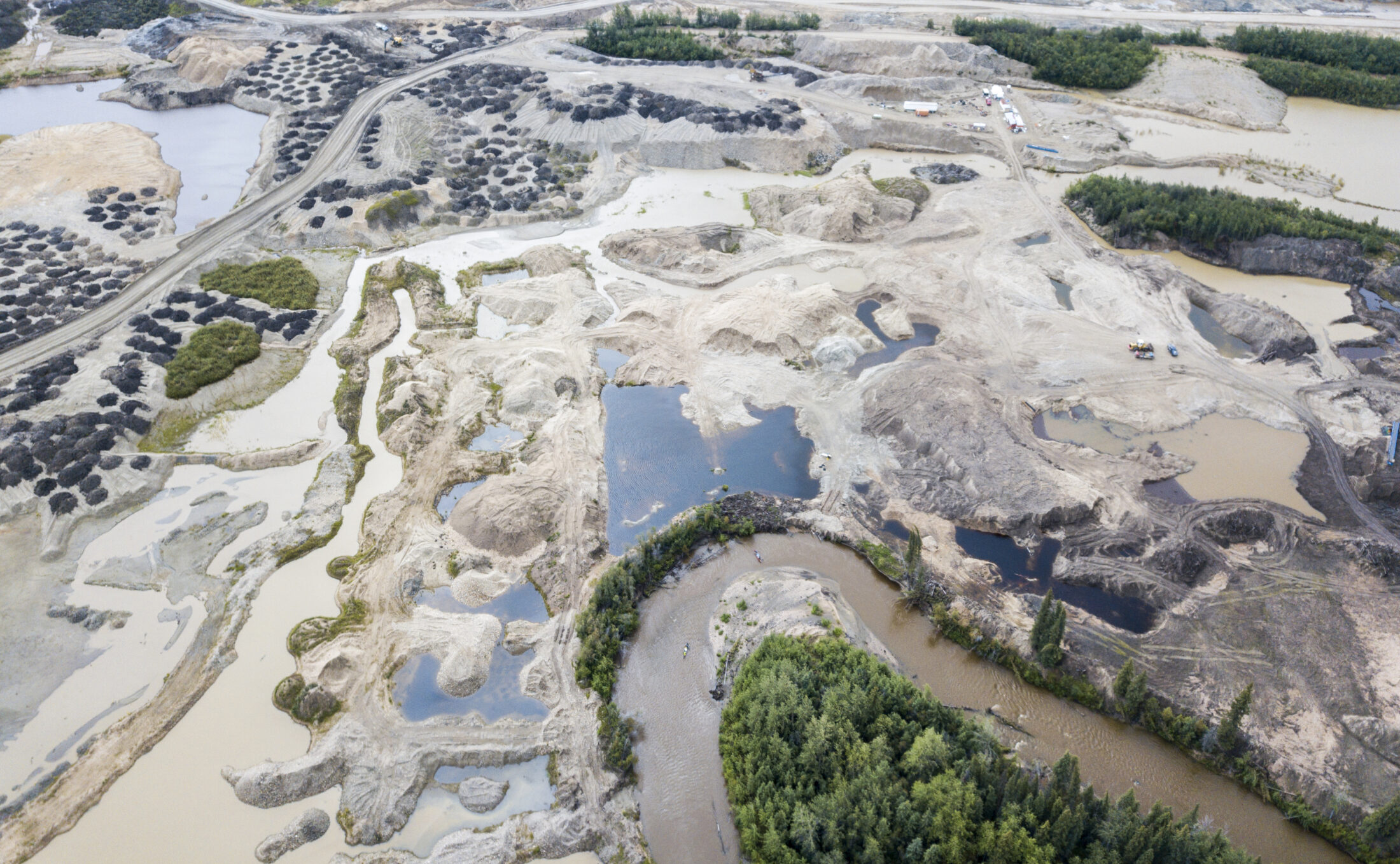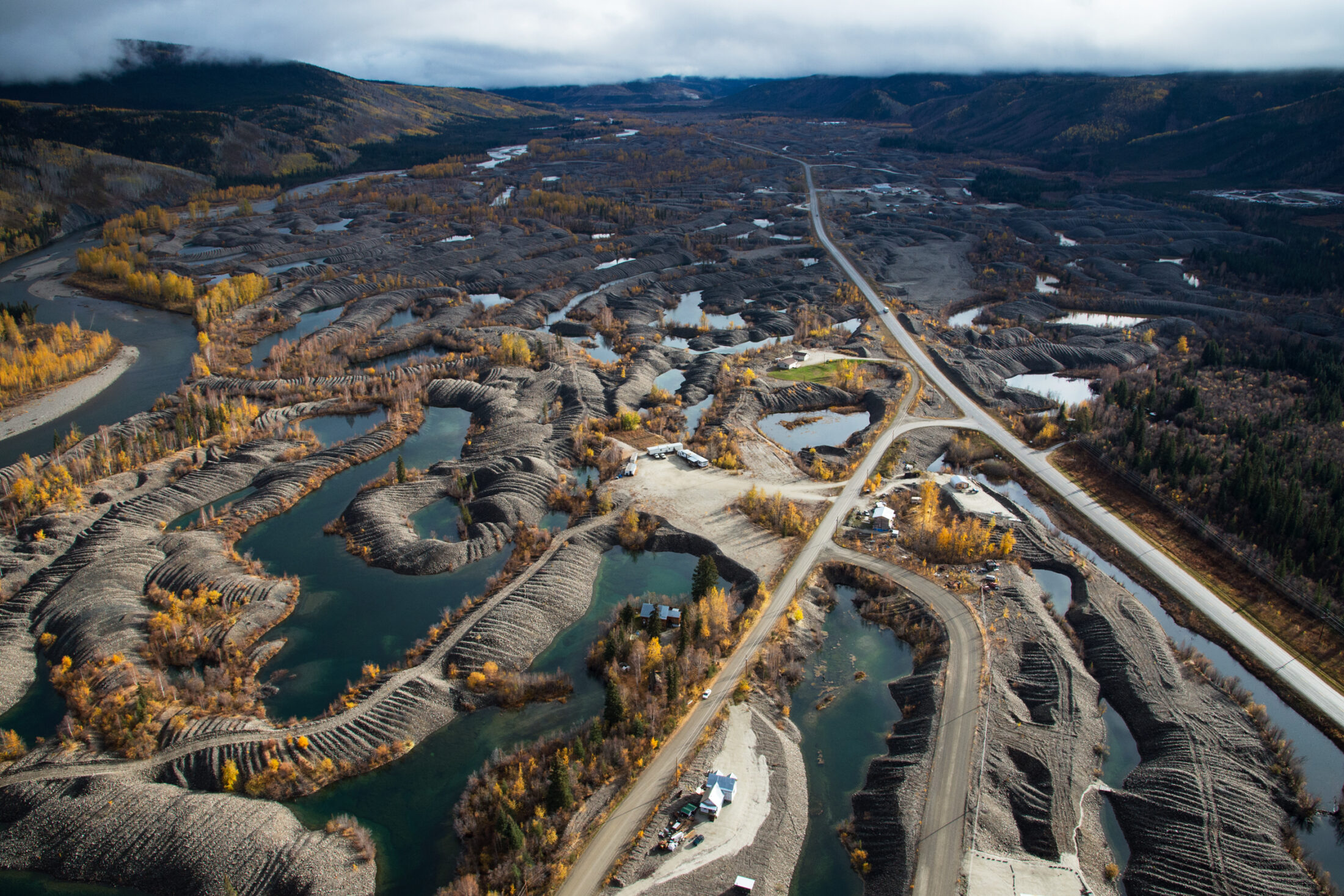
In a Nova Scotia research lab, the last hope for an ancient fish species
Racing against time, dwindling habitat and warming waters, scientists are trying to give this little-known...
An independent panel is urging the Yukon government to develop a wetlands policy to protect unique streams, bogs, fens and peatland from mining because there are no known ways to fully restore these sensitive ecosystems once disturbed.
Wetlands filter water, provide habitat to species and sequester carbon but are quickly being lost to development worldwide — an issue drawing attention on World Wetlands Day Feb. 2.
“Some wetlands are 6,000 years old in the Yukon,” Jamie Kenyon, Yukon manager of Ducks Unlimited Canada, told The Narwhal. That puts the formation of some Yukon wetlands at roughly 4000 B.C.E., coinciding with the Bronze Age and the development of human civilization’s earliest writing practices.
In a recent mineral development strategy report to the territorial government, the panel emphasizes how sensitive wetlands are, urging Yukon to finalize a wetlands policy “founded on the recognition that wetlands cannot be returned to a pre-disturbance state within seven generations.”
Yukon has no framework to specifically address the impacts of mining on wetlands, which are predominantly affected by placer mining operations that involve digging up wetlands, streams and river beds in the search for gold.
Placer mining claims have grown significantly in Yukon over the last decade, particularly along the Indian River near Dawson City, where decades of extraction has dramatically harmed waterways, threatening wildlife and the Indigenous Rights of the Tr’ondëk Hwëch’in First Nation.
The absence of a wetlands protection policy has “created uncertainty” for miners, according to the Yukon government. It has also stoked concern that industry is running roughshod over wetland areas due to few checks and balances.
The territory could be on the cusp of a significant change, however, with the Yukon government slated to release the territory’s first wetlands policy later this year. Onlookers are calling for stronger baseline wetland protections that prioritize conservation and Indigenous Rights over industrial interests.
The government’s goal should be to ensure new policy results in far more protection for wetlands, Randi Newton, conservation manager with the Yukon chapter of the Canadian Parks and Wilderness Society, told The Narwhal.
The need for protections that will prevent wetlands from being destroyed is evident in the panel’s warning that wetland reclamation practices are not effective, she added.
“The language in the mineral development strategy really signals that the wetlands policy really needs to set us up to make cautious decisions, recognizing that there’s these irreversible trade-offs that come with development,” Newton said.
“The policy should prioritize avoidance of development in wetlands versus half-measures like reclamation.”
The panel also recommends the Yukon government earmark funding to encourage innovative technologies that could introduce new “rehabilitation practices” in wetlands, which include fens, bogs and swamps.
This likely revolves around the fact wetland reclamation in Yukon is “completely unproven,” Kenyon said.
“There’s no tested way to replace a fen with a fen, a bog with a bog,” he said.

The wetlands of the Indian River watershed, south of Dawson City, Yukon, have been impacted by decades of placer mining. Photo: Malkolm Boothroyd / CPAWS Yukon
There are some examples of wetland reclamation strategies that have been used in southern Canada, such as the “moss layer transfer technique,” which involves the reintroduction of peat — a spongy, organic soil-like matter made up of partially decomposed vegetation unique to bogs and fens — combined with the spreading of mulch and fertilizer and several stages of watering. According to a peatland restoration guide developed by the Université Laval Peatland Ecology Research Group, this technique has been used in more than 100 peatland restoration projects in Canada.
But restoration techniques used elsewhere may not work in Yukon, where wetlands are particularly unique because they are “inextricably linked” with permafrost, which itself can take thousands of years to form, Kenyon said. “It’s very difficult to tease apart one from the other,” he said. “The permafrost allows water to collect at the surface, which allows the wetlands to form vegetation — that peat — which allows the permafrost to not melt.”
According to a best practices strategy document from the Klondike Placer Miners’ Association, an estimated five per cent of streams in Yukon have been impacted by placer mining and that in order for operations to take place in rivers and streams, “the disturbance or destruction of these wetlands usually cannot be avoided.” Permafrost is also impacted, as miners must thaw the ice-laden sediment to successfully mine for gold.
“There is very limited information regarding the restoration of northern wetlands, particularly those in permafrost areas,” the document states.
Carl Schulze, secretary treasurer with Yukon Prospectors Association, a mining advocacy group, told The Narwhal that placer miners are able to restore wetlands to a point where they can once again sustain wildlife.
“You can restore it to a productive level, where you can start getting poplars and willows, little ponds where the ducks move back in,” he said. “The animals move in pretty quick, so as far as that goes, it’s productive, meaning that animals can benefit from it — they can find food, they can re-establish habitat.”
“It doesn’t look like it did before anybody got at it, but, in a way, it doesn’t matter because it’s not a detriment to wildlife.”

Placer mining involves digging in wetlands for gold. Although industry is required to remediate disturbed wetlands, there are no remediation techniques capable of restoring bogs, fens and peatlands to their natural, pre-disturbed state. Research shows peatlands are crucially important to carbon storage — but only when left undisturbed. Photo: Malkolm Boothroyd / CPAWS Yukon
But Kenyon said when placer miners restore wetlands, they tend to take an entirely different form — a depression in land with water in it that, over time, allows some vegetation to grow back.
A problem, however, is that a key ingredient is lost in the process: when placer miners work a claim that includes a wetland, they tend to stockpile peat off to the side where it essentially dies, Kenyon said. An October 2020 study published in Environmental Research Letters found that peatlands cover only about three per cent of the planet and act as a rich carbon deposit, but only if left undisturbed. Drying and dead peatlands can release large amounts of emissions into the atmosphere for decades or centuries, the researchers found.
According to a 2017 report by the Boreal Songbird Initiative, Canadian boreal peatlands hold at least 147 billion tonnes of carbon, equivalent to 736 years of Canada’s industrial greenhouse gas emissions.
Kenyon noted that peat stockpiled and set aside for mining reclamation projects can be permanently damaged.
“Once peat starts drying out and is exposed to oxygen, it starts decomposing at a much faster rate, so you can’t just, five years later, throw it back … and think it will come back to what it was before,” he said.
Placer mining is regulated under legislation first written in 1898, well before the ecological impacts of mineral extraction were understood.
The panel found that over the last 122 years “a patchwork quilt of amendments have rendered the Yukon’s mineral resource legislation unresponsive to evolving industry circumstances and difficult to enforce.”
To fix this, the panel has recommended a major overhaul of mining legislation, setting a deadline of 2023 for that work to be completed. But some are concerned those changes aren’t coming quickly enough to protect wetlands in imminent danger from placer mining.
This is the case for wetlands in the Dawson region, where the majority of Yukon’s placer mining operations take place.
Darren Taylor, the director of natural resources for Tr’ondëk Hwëch’in First Nation in whose territory the Dawson region lies, told The Narwhal the ongoing destruction of wetlands is undermining his nation’s rights.
“Mining has a big impact on our traditional territory and obviously an impact on Aboriginal Rights and Title,” Taylor told The Narwhal. “You know, [Aboriginal] Rights exist throughout our traditional territory and there’s a constitutional obligation for Yukon and the federal government to ensure that development, whatever they might be, doesn’t adversely affect our right to utilize our traditional territory for traditional purposes.”
Water and wetlands are an important component of those rights, Taylor said, noting wetlands in his nation’s territory are crucial for biodiversity and provide fish and moose habitat that his community relies on for food.
“Through the erasing of the land and water, and our ties to that land and water, we are losing ourselves … from the land.”
The Yukon Water Board, the independent body responsible for issuing water licenses to placer miners, recently held virtual public hearings on placer mining in wetlands. The findings of those hearings will help inform the Yukon government’s upcoming wetlands policy.
During those proceedings, Tr’ondëk Hwëch’in First Nation representatives, including Taylor, spoke of the devastating impacts placer mining has already had on wetlands in the Indian River watershed. For several years the Tr’ondëk Hwëch’in First Nation has asked for mining to be stopped in wetlands that cannot be reclaimed to their natural state.
“With the increase in activity levels and lack of reclamation and destroyed habitat, I don’t feel as comfortable with harvesting down there anymore,” he told the board. “I don’t even want to drive down there for leisure. It’s too depressing.”
“Through the erasing of the land and water, and our ties to that land and water, we are losing ourselves … from the land,” he said.
Taylor told The Narwhal that remaining wetlands urgently need to be documented. “All we’re saying is we need to identify the wetlands, their functions and which ones you can mine and which ones you can’t.”

The impacts of placer mining are very visible in the unnatural pilings running throughout the Klondike Valley near Dawson City, Yukon. Before the Gold Rush, the Klondike River was one of the healthiest spawning rivers in the Yukon Watershed. However, placer mining throughout the Klondike devastated the salmon run in the region. Only in recent years has the river seen a return of Chinook salmon. Photo: Peter Mather
The Yukon chapter of the Canadian Parks and Wilderness Society recently called on the water board to stop issuing water licenses until reclamation standards are established and disturbance thresholds are set, or until land use plans are in place.
The Yukon government has refused calls to halt placer mining in the region while the development of the Dawson Regional Land Use Plan is underway.
According to a regional resource assessment report conducted by the Dawson land use planning commission, 10 per cent of the Dawson region is made up of rare wetlands that are ecologically important.
Several of the independent panel’s recommendations to the Yukon government seek to ensure Indigenous Rights are upheld in the new legislation — that the acts align with modern treaties, the Canadian constitution and the United Nations Declaration on the Rights of Indigenous Peoples (UNDRIP), as well as acknowledge the principle of Free, Prior and Informed Consent.
Were the Yukon government to act on the panel’s recommendations it could strengthen the involvement of First Nations when it comes to placer mining in wetlands, Taylor said.
Newton, of Canadian Parks and Wilderness Society, said mining in wetlands has already reached an unsustainable level, with that way of doing business set to continue.
“The Yukon doesn’t have a good way to right now to protect important ecosystems for cultural sites from development while we wait for land use planning,” she added. “There are lots of places that would have been protected had land use planning got there first.”
There are places in Yukon where mining is getting close to unsustainable levels for local ecosystems, Newton said, “so bringing in legislative changes could help us get off that treadmill of development that leads to those situations.”
Newton added that neither the Yukon’s new mining legislation nor a new wetlands policy will offer a “silver bullet” solution to the impacts of mining in wetlands. But she is encouraged that the development of these new laws and policies could leave a positive mark.
“We’re at this interesting moment where real change is possible.”
The independent panel’s final strategy document is expected to be submitted to the Yukon government and First Nations in March. Yukoners are invited to comment on the draft version until Feb. 22.
Editor’s note: a report cited in this story, on Canadian boreal peatlands, was published by the Boreal Songbird Initiative, an organization which provides financial support to The Narwhal. Per our editorial independence policy, The Narwhal maintains a firewall between news coverage decisions and all sources of revenue.
Get the inside scoop on The Narwhal’s environment and climate reporting by signing up for our free newsletter. On March 17, federal Conservative Leader Pierre Poilievre...
Continue reading
Racing against time, dwindling habitat and warming waters, scientists are trying to give this little-known...

From investigative reporting to stunning photography, we’ve been recognized with four 2024 CAJ Awards nods...

The Narwhal is expanding its reach on video platforms like YouTube and TikTok. First up?...
